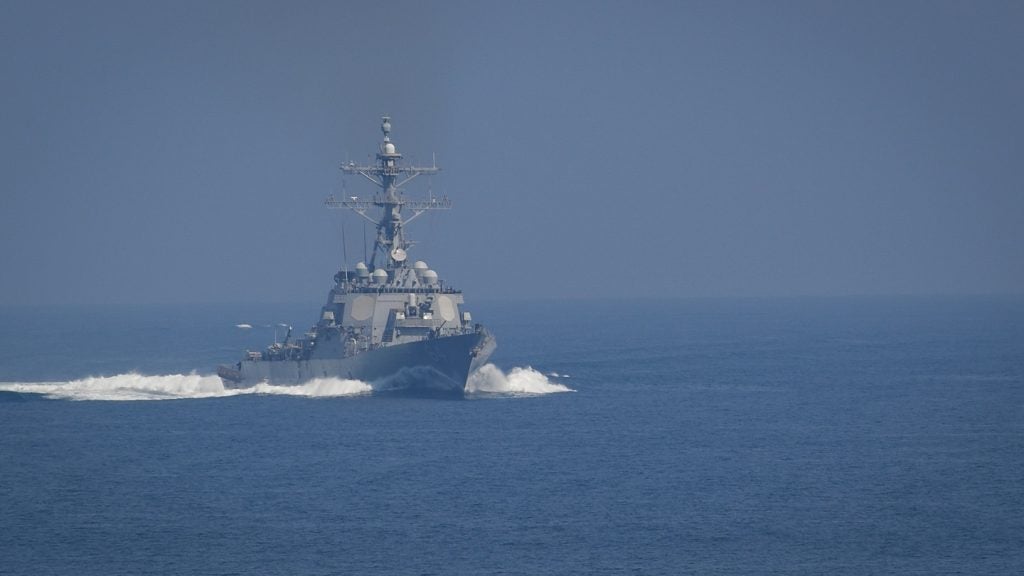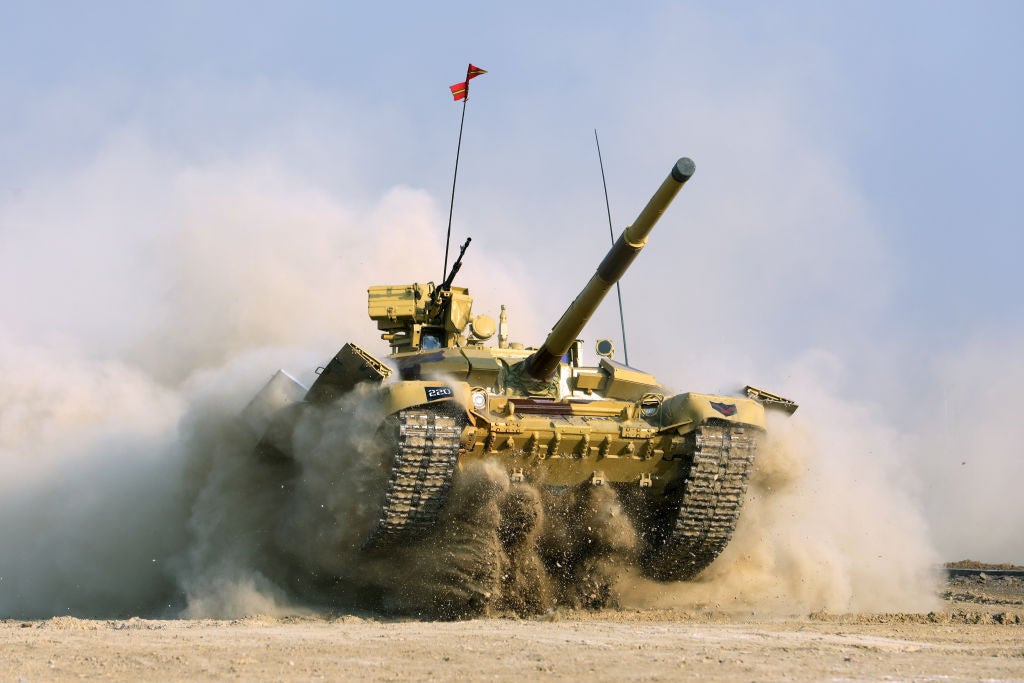The threat of the Israel-Hamas war spilling over into the wider Middle East region appears to have increased, following a week of apparent missile and UAV attacks on US naval warships and Western-linked commercial shipping in transit through the Red Sea and Gulf of Aden.
Detailing the latest series of incidents on 3 November 2023, the US Central Command (CENTCOM) stated that four attacks took place against three separate commercial vessels operating in international waters in the southern Red Sea. The US Navy warship USS Carney, an Arleigh Burke-class guided-missile destroyer, responded to the distress calls of the affected vessels, CENTCOM stated.
A chronology of the attacks was also provided, starting at approximately 9:15am Sanaa time on 3 November, when the USS Carney detected an anti-ship ballistic missile attack fired from Houthi controlled areas of Yemen toward the M/V Unity Explorer, impacting in the vicinity of the vessel. The Unity Explorer is a Bahamas flagged, UK owned and operated, bulk cargo ship.
At approximately 12 pm, the USS Carney engaged and shot down a UAV launched from Houthi controlled areas in Yemen, according to CENTCOM, although it was not clear whether the US warship was the intended target.
In a separate attack at approximately 12:35pm, the M/V Unity Explorer reported it had been struck by a missile fired from Houthi controlled areas in Yemen. While assisting, USS Carney detected and destroyed another inbound UAV from Yemeni territory. The MV Unity Explorer reported minor damage from the missile strike.
Less than three hours later, at approximately 3:30pm the M/V Number 9 was struck by a missile fired from Houthi controlled areas in Yemen while operating international shipping lanes in the Red Sea. The Panamanian flagged, Bermuda and UK owned and operated, bulk carrier reported damage and no casualties.
Around one hour later, the Panamanian-flagged bulk carrier M/V Sophie II, sent a distress call stating that it had been struck by a missile, with USS Carney again downing a UAV as it transited to the attack site.
Attacks latest in a week of incidents
In a statement, US CENTCOM said the attacks represented “a direct threat to international commerce and maritime security”, adding it considered that the attacks, while launched by the Houthi movement in Yemen, were “fully enabled by Iran”.
Iran is a strong supporter of the Houthi movement in Yemen, which controls vast swathes of the country, including the capital Sana'a to effectively overthrow the government. Tehran's backing is likely orchestrated through the Iranian Revolutionary Guards Corps Al Quds force, which specialises in clandestine operations and unconventional warfare.
Earlier, on 29 November, the USS Carney shot down an Iranian-produced KAS-04 UAV launched from Houthi-controlled areas of Yemen. At the time of the shoot down, the USS Carney was escorting the USNS Supply (Oiler) and another US flagged and crewed ship carrying military equipment to the region.
Attacks date back further still, with another incident on 26 November involving a different warship, the USS Mason, which interdicted an apparent hijack attempt on the M/V Central Park in the Gulf of Aden, resulting in the apprehension of five “armed individuals”, US CENTCOM stated. The nationality of the individuals is not known.
Just a day later, on 27 November, at least one ballistic missile was fired from Houthi controlled areas in Yemen toward the general location of the USS Mason and M/V Central Park, landing approximately ten miles from the ships.
Of the incidents in November, a US Department of Defense spokesperson on 30 November said that initial assessments at the time indicated that the USS Carney and USS Mason were not the intended targets of the drone and missile attacks, which were likely directed at shipping.
“But they came close enough where at least the Carney felt the need that it had to engage the drone that was coming its way or heading toward -- in the general direction,” said DoD deputy press secretary Sabrina Singh.
“But again, it is up to the commanders of these ships if they feel that they are under attack or they're -- feel like their personnel are threatened to be able to respond and take action.”
On 30 November, days after the first incidents involving US warships in the Red Sea and Gulf of Aden, the UK confirmed that it was to deploy a Royal Navy Type 45 destroyer to the region to bolster maritime security operations. The Type 45 class are dedicated air defence platforms, able to track and intercept multiple airborne threats simultaneously.
Israel-Hamas war operations return after ceasefire
The risk of the Israel-Hamas war spilling into the wider region represents an escalatory nightmare for Western forces in the region, with the real prospect that they could be caught up in the conflagration.
Already on-the-record in saying that its military aviation assets had carried out surveillance flight in support of Israel, the UK on 2 December stated that its forces would be carrying out unarmed ISR flights over Gaza, Israel, and the eastern Mediterranean as part of ongoing hostage rescue operations.
Around 200 hostages, mainly Israeli but also nationalities, were seized by Hamas operatives during the 7 October incursions into Israel that left around 1,200 dead. Hamas-run authorities in Gaza say that Israel’s response, which began with an extensive aerial campaign that has now evolved in a full-scale ground assault into Gaza, has killed more than 14,000 people.
The week-long ceasefire between Israel and Hamas, which saw hundreds of hostages and prisoners exchanged from the two combatants, has since ended with the Israel Defence Force pushing further into Gaza, and now thought to be operating just north of the southern city of Khan Younis.












